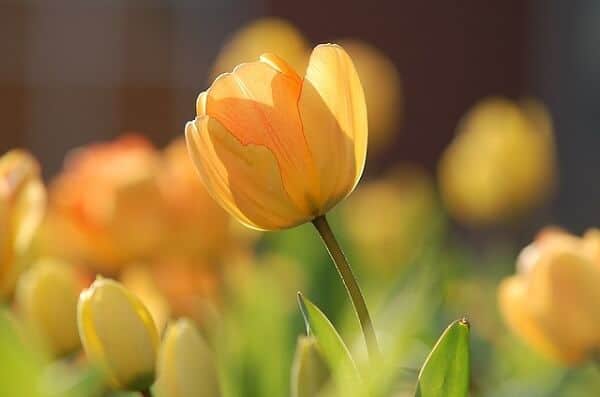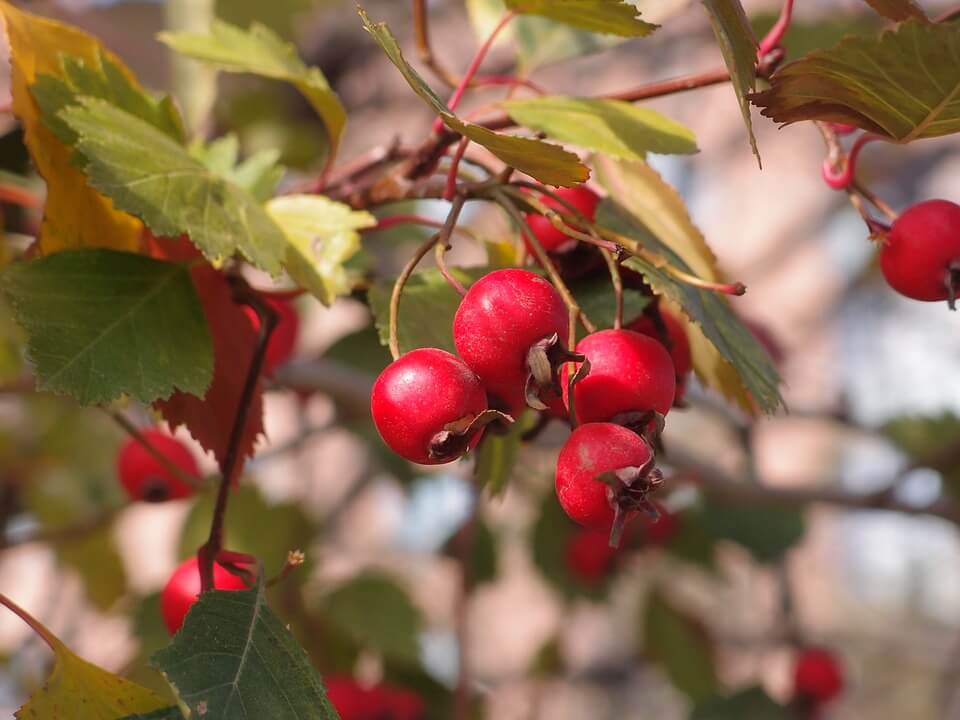Are you considering adding potted gerbera daisies to your home or garden? It’s essential to know how long these vibrant flowers will last so you can enjoy their beauty for as long as possible.
In this article, we will guide you on understanding the lifespan of potted gerbera daisies and provide tips on extending their blooming period.
To ensure the longevity of your gerbera daisies, it’s crucial to create the right environment for them. This includes choosing healthy plants from a reputable source and providing proper care, such as deadheading and pruning. Fertilizing and managing nutrients are also essential for their well-being.
Additionally, protecting your potted gerbera daisies from extreme conditions, like excessive heat or cold, will help them thrive. By following these guidelines, you can maximize the lifespan of your gerbera daisies and enjoy their vibrant colors for an extended period.
Stay tuned for more information on troubleshooting common issues and ensuring the safety of your potted gerbera daisies.
Let’s dive in and learn how to make your flowers last longer!
Quick Summary
- Potted gerbera daisies require proper care and maintenance to thrive and last longer.
- Regular deadheading and pruning promotes new blooms and keeps the plant fresh.
- Providing the right amount of water, sunlight, and temperature is crucial for their well-being.
- Preventing pest infestations and diseases through regular inspection and proper care is essential for the longevity of potted gerbera daisies.
Understanding the Lifespan of Gerbera Daisies
Do you want to know how long your potted gerbera daisies will last? Well, you’ve come to the right place!
When it comes to the lifespan of these beautiful flowers, there are a few factors to consider. One important factor is the watering schedule. Gerbera daisies need to be watered regularly, but be careful not to overwater them. Overwatering can lead to root rot and cause the flowers to wilt and die. On the other hand, underwatering can also be detrimental to their lifespan. It’s important to find the right balance and keep the soil moist, but not waterlogged.
In addition to watering, there are some gerbera daisy care tips that can help prolong their lifespan. These flowers thrive in bright, indirect sunlight, so make sure to place them in a spot where they can get plenty of light. It’s also important to keep the temperature consistent, as extreme heat or cold can damage the flowers. Lastly, regular deadheading can help promote new blooms and keep the plant looking fresh.
By following these tips and providing the proper care, your potted gerbera daisies can last for several weeks or even months. So go ahead and enjoy the beauty of these vibrant flowers, knowing that with a little love and attention, they can brighten up your space for a long time.
Providing the Right Environment
Create the perfect environment for your potted gerbera daisies to thrive and enjoy their vibrant beauty for as long as possible. Follow these tips to ensure they receive the proper care they need:
-
Maintaining proper lighting: Gerbera daisies love bright, indirect sunlight. Place your pots near a window that receives plenty of light throughout the day. Avoid exposing them to direct sunlight, as it can scorch their delicate petals. If natural light is limited, consider using artificial grow lights to supplement their light needs.
-
Preventing pest infestation: Keep a watchful eye for common pests like aphids, spider mites, and whiteflies. These pesky critters can quickly damage your gerbera daisies. Regularly inspect the leaves and stems for any signs of infestation, such as sticky residue or small webs. If you notice any pests, gently wipe them off with a damp cloth or use an organic insecticidal soap to eliminate them.
-
Maintaining proper watering: Gerbera daisies prefer consistently moist soil, but not overly saturated. Water them thoroughly when the top inch of soil feels dry to the touch. Ensure that the pots have proper drainage to prevent waterlogging, which can lead to root rot.
-
Providing adequate airflow: Good air circulation helps prevent the growth of mold and mildew, which can harm your gerbera daisies. Avoid overcrowding them with other plants and ensure there is enough space between each pot for air to flow freely.
By following these guidelines, you can create a safe and nurturing environment for your potted gerbera daisies, allowing them to flourish and brighten up your space for an extended period.
Choosing Healthy Plants
To ensure you have thriving and vibrant gerbera daisies, it’s essential to choose healthy plants right from the start. When buying gerbera daisies, there are a few key tips to keep in mind.
First, inspect the plants carefully for any signs of disease or pests. Look for healthy leaves that are green and free from spots or discoloration. Avoid plants with wilted or yellowing leaves, as this could be a sign of poor health. Additionally, check the roots of the plant to ensure they’re white and firm, not brown or mushy.
Once you have chosen healthy gerbera daisies, it’s important to properly care for them to maximize their lifespan. One of the most crucial aspects of care is watering. Gerbera daisies prefer moist but well-draining soil. It’s important not to overwater them, as this can lead to root rot. Instead, water the plants when the top inch of soil feels dry. Ensure that the water reaches the roots and avoid getting the leaves wet, as this can contribute to fungal diseases.
By following these buying tips and watering techniques, you can give your gerbera daisies the best possible start and help them thrive for as long as possible. Remember, healthy plants are the foundation for a beautiful and long-lasting garden.
Deadheading and Pruning
To keep your gerbera daisies looking their best, it’s important to regularly deadhead and prune them. Deadheading is the process of removing faded flowers from the plants. By doing this, you not only improve the appearance of your daisies, but also promote more blooms.
Deadheading benefits your gerbera daisies in several ways. First, it prevents the plant from wasting energy on producing seeds, allowing it to redirect its resources towards new growth and more flowers. Second, removing faded flowers prevents diseases and pests from attacking the plant, as these often target dying blooms. Lastly, deadheading encourages a prolonged blooming period, ensuring your daisies stay vibrant for as long as possible.
Proper pruning techniques are essential for maintaining healthy gerbera daisies. When pruning, make sure to use sharp, clean tools to avoid damaging the plant. Start by removing any dead or damaged leaves or stems. This helps prevent the spread of diseases and pests. Additionally, thin out crowded areas by removing excess growth. This allows for better air circulation and reduces the chances of fungal infections. Lastly, consider cutting back the entire plant by one-third to promote new growth and maintain a compact shape.
By regularly deadheading and pruning your gerbera daisies, you not only enhance their appearance but also ensure their longevity. Remember to follow proper techniques to promote a healthy and flourishing plant.
Fertilizing and Nutrient Management
Take a moment to consider how fertilizing and managing nutrients can help your gerbera daisies thrive and reach their full potential. Proper fertilization is essential for the health and longevity of your potted gerbera daisies.
When it comes to fertilizer application, it’s important to follow the instructions provided by the manufacturer. Use a balanced, slow-release fertilizer that’s specifically formulated for flowering plants. This will ensure that your gerbera daisies receive a steady supply of nutrients over time.
Before applying fertilizer, it’s crucial to assess the quality of your soil. Gerbera daisies prefer well-draining soil that’s rich in organic matter. If your soil is heavy or compacted, consider amending it with compost or peat moss to improve its texture and fertility. This will help the roots access the nutrients more effectively.
When applying fertilizer, be careful not to overdo it. Too much fertilizer can lead to excessive growth and weak stems, making your gerbera daisies more susceptible to diseases and pests. Follow the recommended dosage and frequency on the fertilizer package.
In addition to regular fertilization, proper nutrient management is also important for the overall health of your gerbera daisies. Monitor the pH level of the soil and adjust it if necessary to ensure optimal nutrient uptake. Regularly check for signs of nutrient deficiencies, such as yellowing leaves or stunted growth, and address them promptly with appropriate nutrient supplements.
By providing your gerbera daisies with the right amount of nutrients, you can help them thrive and enjoy their vibrant blooms for a longer period of time.
Protecting from Extreme Conditions
Shield your gerbera daisies from harsh weather conditions by providing them with the necessary protection. These delicate flowers are susceptible to damage from extreme conditions such as frost and excessive moisture.
To protect them from frost, consider bringing them indoors during cold winter nights or covering them with a frost blanket. This will help prevent the freezing temperatures from harming the tender blooms.
In addition to protecting your gerbera daisies from frost, it’s important to prevent root rot caused by excessive moisture. Ensure that your potted daisies have proper drainage by using a well-draining potting mix and a container with drainage holes. This will allow excess water to escape and prevent waterlogged soil, which can lead to root rot.
Furthermore, avoid overwatering your gerbera daisies. These plants prefer to be slightly dry rather than constantly wet. Check the moisture level of the soil by inserting your finger about an inch deep. If it feels dry, it’s time to water your daisies. However, if the soil feels moist, hold off on watering to prevent root rot.
By following these protective measures, you can extend the lifespan of your potted gerbera daisies and enjoy their vibrant blooms for longer periods of time.
What Is the Lifespan of Potted Daffodils?
Potted daffodils lifespan typically ranges from two to four weeks, depending on various factors. These cheerful flowers bring bursts of vibrant colors and fragrant blooms indoors, delighting their viewers for a short period. To prolong their lifespan, adequate watering, indirect sunlight, and cool temperatures are crucial.
Extending the Blooming Period
To ensure the longevity of your potted gerbera daisies and maximize their blooming period, there are a few simple steps you can take. By following these guidelines, you can prolong the flowering of your gerbera daisies and enjoy their vibrant blooms for an extended period of time.
First and foremost, it’s crucial to provide your gerbera daisies with the right amount of water. While they require regular watering, be cautious not to overwater them as this can lead to root rot. It’s best to keep the soil slightly moist, allowing it to dry out slightly between waterings.
Additionally, placing your potted gerbera daisies in a location that receives bright, indirect sunlight will optimize their blooming potential. These beautiful flowers thrive in well-lit areas, but direct sunlight can scorch their delicate petals.
Furthermore, regularly removing wilted or faded flowers, a practice known as deadheading, will encourage your gerbera daisies to produce more blooms. By pinching off these spent flowers, you’re directing the plant’s energy towards new growth and encouraging continuous blooming.
By following these simple steps and providing your potted gerbera daisies with the proper care, you can extend their blooming period and maximize the number of beautiful blooms they produce. Enjoy the beauty and vibrancy of your gerbera daisies for as long as possible!
Troubleshooting and Common Issues
Ensure the health and vitality of your potted gerbera daisies by addressing common issues and troubleshooting any problems that may arise.
To keep your plants in top shape, it’s important to be aware of potential troubles such as plant diseases and insect infestations.
When it comes to troubleshooting plant diseases, prevention is key. Start by providing your gerbera daisies with proper care and maintenance, including regular watering and well-draining soil. Avoid overwatering, as it can lead to root rot and other fungal diseases. Keep an eye out for signs of disease, such as yellowing or wilting leaves, and take action immediately if you spot any issues. Remove and dispose of any infected leaves or flowers to prevent the spread of disease.
Preventing insect infestations is also crucial in maintaining the health of your gerbera daisies. Inspect your plants regularly for any signs of pests, such as aphids or spider mites. If you notice any infestations, try using natural remedies like neem oil or insecticidal soap to control the problem. Additionally, you can encourage beneficial insects like ladybugs or lacewings to help keep pests at bay.
By staying vigilant and addressing common issues promptly, you can ensure that your potted gerbera daisies stay healthy and vibrant for as long as possible.
Frequently Asked Questions
Can potted Gerbera daisies be planted outdoors?
Yes, potted gerbera daisies can be safely transplanted outdoors. Remember to choose a sunny spot with well-draining soil. Regularly water and fertilize them to ensure they thrive in their new environment.
What is the ideal temperature for potted Gerbera daisies?
To ensure the ideal temperature for potted gerbera daisies, keep them in a warm environment between 65-75 degrees Fahrenheit. This is crucial for gerbera daisy care and will help them thrive and stay healthy.
How often should I water potted Gerbera daisies?
Water potted gerbera daisies when the top inch of soil feels dry. Overwatering can lead to root rot, so be cautious. Signs of overwatering include yellowing leaves and a musty smell.
Can potted Gerbera daisies be propagated?
Yes, potted gerbera daisies can be propagated through division or by taking stem cuttings. To ensure the health of your plants, follow proper gerbera daisy care guidelines for successful propagation.
Are potted Gerbera daisies toxic to pets?
Potted gerbera daisies can be toxic to cats and dogs. It’s important to keep these flowers out of reach to ensure the safety of your furry friends.
Conclusion
So, now you know how long potted gerbera daisies can last and the steps you can take to ensure their longevity. By providing the right environment and choosing healthy plants, deadheading and pruning, fertilizing and managing nutrients, protecting from extreme conditions, and extending the blooming period, you can enjoy beautiful and vibrant gerbera daisies for a longer time.
Remember to troubleshoot any issues that may arise and take the necessary steps to address them. With proper care, your potted gerbera daisies will bring joy and beauty to your space for a significant period.









